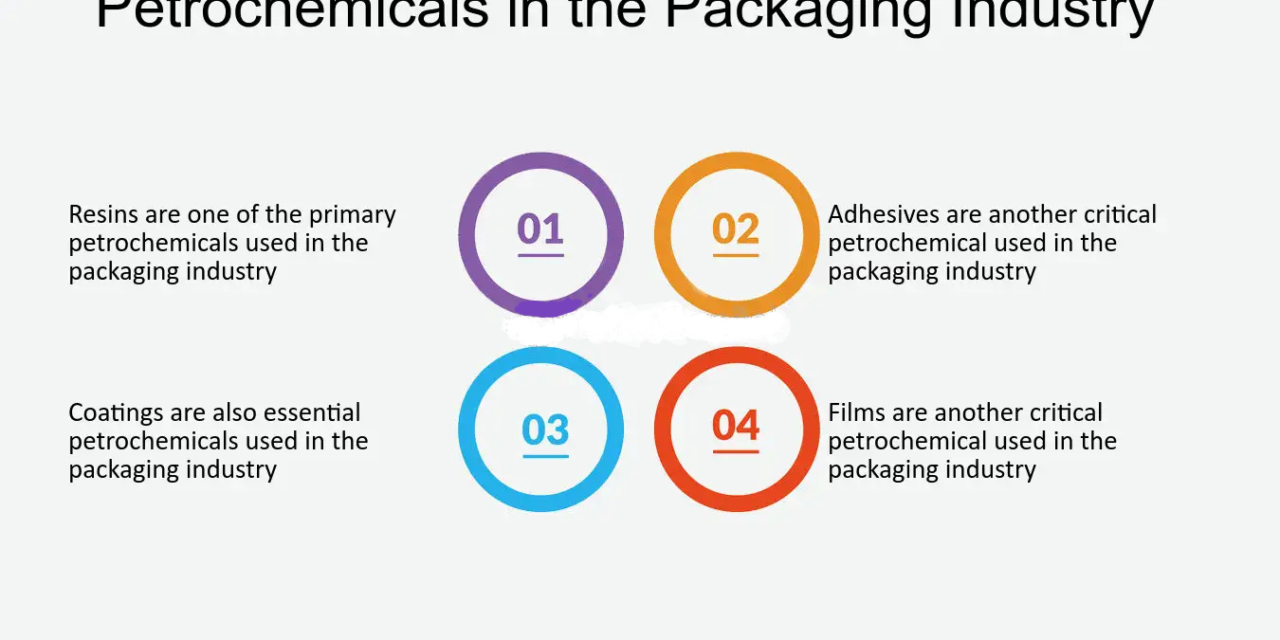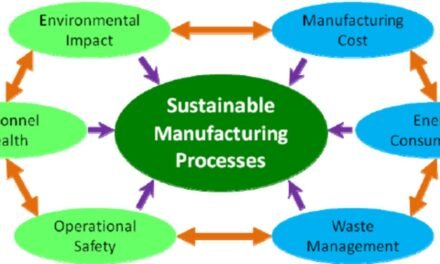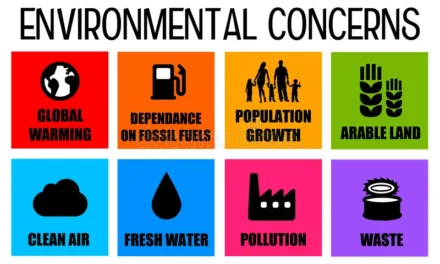Petrochemical products have a profound impact on the packaging industry, serving as the foundation for a wide range of packaging materials. They enable the development of versatile, durable, lightweight, and cost-effective solutions while also driving innovation in sustainability and functionality. Here’s an in-depth look at their impact:
1. Key Petrochemical Products in Packaging
- Polyethylene (PE):
- Widely used in flexible packaging, such as plastic bags, films, and shrink wraps.
- High-Density Polyethylene (HDPE) and Low-Density Polyethylene (LDPE) offer strength, flexibility, and chemical resistance.
- Polypropylene (PP):
- Used in rigid packaging for food containers, bottle caps, and microwave-safe applications.
- Lightweight, transparent, and resistant to heat and chemicals.
- Polyethylene Terephthalate (PET):
- Popular in beverage bottles and food containers due to its clarity, strength, and recyclability.
- Polystyrene (PS):
- Used in disposable packaging, such as foam trays, cups, and protective materials.
- Polyvinyl Chloride (PVC):
- Found in blister packs, clamshells, and food wraps for its transparency and durability.
2. Advantages of Petrochemical-Based Packaging
- Versatility:
- Petrochemical products can be molded into various forms, from flexible films to rigid containers, meeting diverse packaging needs.
- Durability:
- Resistant to moisture, chemicals, and impact, making them suitable for protecting goods during transport and storage.
- Cost-Effectiveness:
- Mass production capabilities and relatively low material costs make petrochemical-based packaging affordable.
- Lightweight:
- Reduces transportation costs and carbon emissions compared to heavier materials like glass or metal.
3. Market Drivers
- E-Commerce Growth:
- Increased demand for protective and flexible packaging to ensure safe delivery of goods.
- Food and Beverage Industry:
- High demand for packaging that ensures product freshness, safety, and extended shelf life.
- Healthcare and Pharmaceuticals:
- Rising demand for sterile and tamper-evident packaging for medical devices and drugs.
- Consumer Goods:
- Flexible and attractive packaging solutions for personal care and household products.
4. Innovation and Advanced Applications
- Barrier Films:
- Multilayer films made from petrochemical derivatives enhance moisture, oxygen, and light barriers for food preservation.
- Smart Packaging:
- Incorporates sensors and indicators to monitor product freshness or authenticity, often using polymers with embedded technologies.
- Sustainable Alternatives:
- Bio-based and recycled polymers are reducing the environmental footprint of petrochemical-based packaging.
- Lightweighting:
- Innovations in material design reduce the amount of plastic used in packaging without compromising strength or functionality.
5. Environmental Considerations
- Plastic Waste:
- Single-use petrochemical-based packaging contributes to environmental pollution and challenges in waste management.
- Recycling and Circular Economy:
- Advances in chemical and mechanical recycling are increasing the recyclability of packaging materials like PET and PP.
- Bio-Based Plastics:
- Efforts to develop bio-derived polymers are addressing environmental concerns while maintaining the properties of traditional plastics.
6. Challenges in the Packaging Industry
- Regulatory Pressures:
- Stricter regulations on single-use plastics and mandates for recycled content are influencing packaging material choices.
- Consumer Demand for Sustainability:
- Increasing consumer awareness of environmental issues is pushing brands to adopt eco-friendly packaging options.
- Feedstock Volatility:
- Fluctuations in crude oil and natural gas prices impact the cost of petrochemical-derived packaging materials.
7. Sustainability Initiatives
- Recycling Programs:
- Global efforts to improve plastic collection and recycling rates are transforming how petrochemical-based packaging is used and managed.
- Chemical Recycling:
- Breaking down plastics into their original monomers for reuse in new packaging materials.
- Biodegradable and Compostable Polymers:
- Development of materials like polylactic acid (PLA) for environmentally friendly packaging solutions.
- Reusable Packaging:
- Initiatives to reduce single-use plastics through reusable packaging systems for consumer goods and e-commerce.
8. Regional Insights
- Asia-Pacific:
- Rapid growth in the food, beverage, and e-commerce sectors drives demand for flexible and rigid packaging.
- North America:
- Focus on innovation and sustainability, with significant investments in recycling and bio-based packaging solutions.
- Europe:
- Leading the adoption of circular economy practices and stricter regulations on plastic usage.
- Middle East and Africa:
- Expanding petrochemical production capacities to meet rising regional and global packaging demand.
9. Future Trends
- Innovative and Interactive Packaging:
- Integration of NFC chips, QR codes, and sensors for enhanced consumer engagement and product tracking.
- Customized Packaging:
- Advances in 3D printing and digital technologies enable personalized packaging solutions.
- Increased Recycling Rates:
- Collaboration between petrochemical producers, packaging manufacturers, and waste management companies to achieve higher recyclability.
- Global Standardization:
- Development of universal guidelines for sustainable packaging materials and recycling.
10. Conclusion
Petrochemical products are indispensable to the packaging industry, providing the materials needed for diverse, functional, and cost-effective solutions. However, as environmental and regulatory pressures increase, the industry is innovating to create more sustainable packaging options, such as recycled and bio-based polymers. With continued advancements in technology and a focus on circular economy practices, petrochemical-based packaging will evolve to meet future demands while addressing environmental challenges.
Hashtags
#EthyleneOutlook #PropyleneOutlook #PetrochemicalForecast #IndustryTrends #MarketDynamics #EthyleneDerivatives #PropyleneDerivatives #ChemicalDerivatives #PlasticsAndPolymers #ChemicalApplications #GlobalDemandGrowth #EmergingMarkets #PetrochemicalGrowth #MarketExpansion #DemandDrivers #SustainableChemicals #GreenPetrochemicals #EcoFriendlyPlastics #CircularEconomy #InnovativePetrochemicals #SupplyChainTrends #FeedstockEconomics #PetrochemicalLogistics #RawMaterialOutlook #EnergyAndFeedstocks #GlobalPetrochemicals #AsiaGrowthHub #MiddleEastPetrochemicals

















